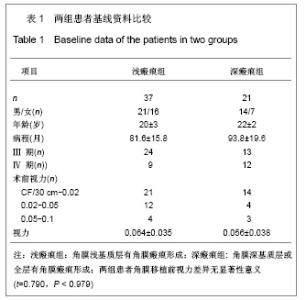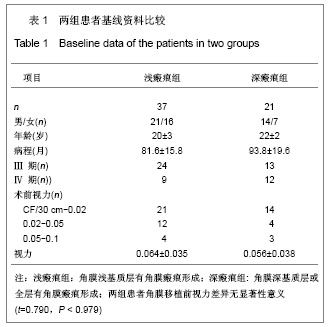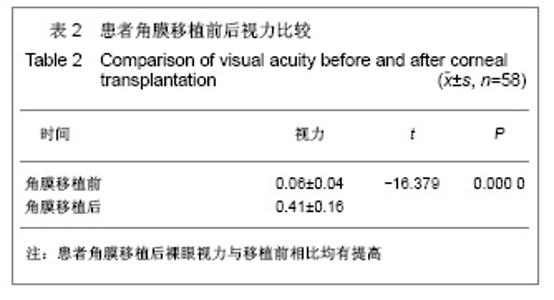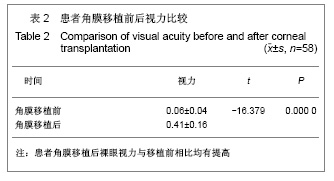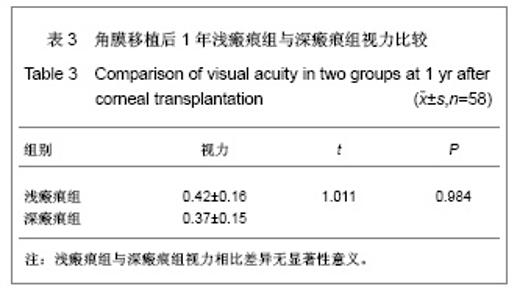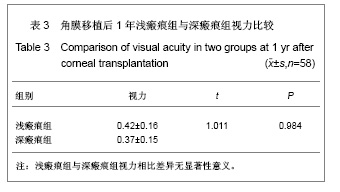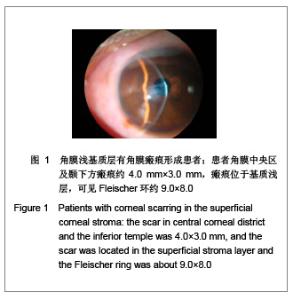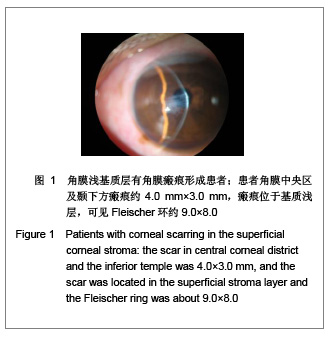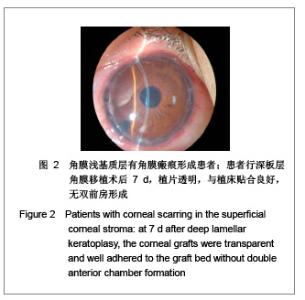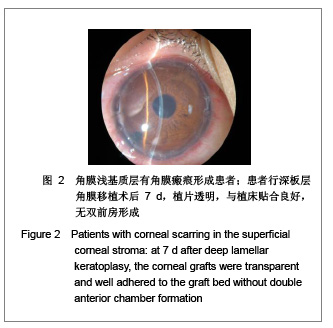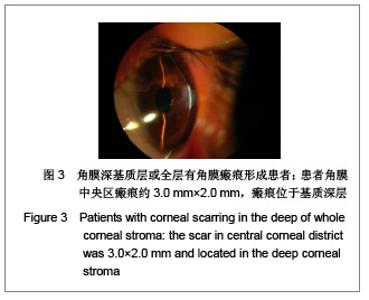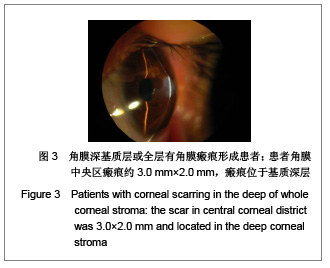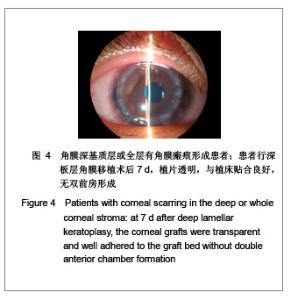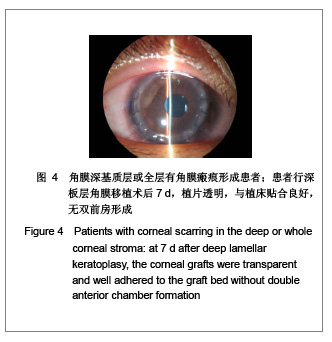| [1] Sun BJ,Xu JT.Kexue Jishu Wenxian Chubanshe.1994: 291-292. 孙秉基,徐锦堂.角膜病的理论基础与临床[M].北京:科学技术文献出版社,1994:291-292.[2] Pan ZQ,Jie Y.Zhonghua Yanke Zazhi. 2004;40(3):214-216. 潘志强,接英.圆锥角膜的诊治进展[J].中华眼科杂志,2004,40(3): 214-216.[3] Liu P,Wang YQ,Wang X,et al.Yanwaishang Zhiyebing Zazhi. 2008;30(8):615-618. 刘平,王艳青,王新,等.深板层角膜移植与穿透性角膜移植治疗圆锥角膜的比较[J].眼外伤职业眼病杂志,2008,30(8):615-618.[4] Liu JX,Chen YH,Yanwaishang Zhiyebing Zazhi. 2008;30(7): 570. 刘金星,陈玉浩.圆锥角膜的角膜移植术[J].眼外伤职业眼病杂志, 2008,30(7):570.[5] Liu P.Yanwaishang Zhiyebing Zazhi. 2008;30(5):378-381. 刘平. 深板层角膜移植术治疗圆锥角膜的临床效果[J].眼外伤职业眼病杂志,2008,30(5):378-381.[6] Zhao DQ,Guo HY,Li JC,et al.Zhongguo Shiyong Yanke Zazhi. 2007;25(6):621-623. 赵东卿,郭浩轶,李家臣,等.两种术式角膜移植治疗圆锥角膜疗效比较[J].中国实用眼科杂志,2007,25(6):621-623.[7] Li FS,Wang R.Yanke Xinjinzhan. 2007;27(3):208-212. 李福生,王荣光.穿透性角膜移植术治疗中晚期圆锥角膜疗效分析[J].眼科新进展,2007,27(3):208-212.[8] Bi YL,Xu W,Zhou Q,et al.Zhongguo Shiyong Yanke Zazhi. 2008;26(4):396-399. 毕燕龙,徐蔚,周祁,等.前房气体介导下的深板层角膜移植术[J].中国实用眼科杂志,2008,26(4):396-399.[9] Bi YL,Zhou Q,Jin YP,et al.Tongji Daxue Xuebao:Yixueban. 2008; 29(6):130. 毕燕龙,周祁,金轶平,等.急性圆锥角膜水肿愈合后的深板层角膜移植术[J].同济大学学报:医学版,2008,29(6):130.[10] Zhu ZZ,Zhou DF,Li MQ. Beijing: People’s Medical Pulishing House. 1986:8. 朱志忠,周道伐,黎勉勤.角膜病学[M].北京:人民卫生出版社, 1986: 8.[11] Hirano K,Sugita I, Kobayashi M. Separation of comeal stroma and Descemet’s membrance during deep lamellar keratoplasty. Cornea.2002:21(2):196-199.[12] Waston SI, Ramsay A,Dart JK, et al. Comparison of deep lamellar keratoplasty and penetrating keratoplasty in patients with keratoconus. Ophthalmology. 2004,111(9):1676-1682[13] Van Dooren BT,Mulder PG,Nieuwendall CP,et al. Endothelial cell dendity after deep anterior lamellar keratoplasty.Am J Ophthal-mol.2004;137(3):397-400.[14] Boume WM.Celluar changes in transplanted human corneas l Jj.Cornea.2001;20(6):560-569.[15] Shimazaki J,Shimmura S,Ishioka M,et al. Randomized clinical thai of deep lamellar keratoplasty VS penetrating keratoplasty.Am J Ophthahnol.2002;134(2):159-165.[16] Waston SL,Ramsay A,Dart JK,et al. Comparison of deep lamellar Keratoplasty and penetrating keratoplasty in patients with keratoconus.Ophthahnology.2004;111(9):1676-1682.[17] Trimamhi F,Poppi E,klelsy C,et al. Deep lamellar keratoplasty.0phthalmol gica.2001;215(6):389-393.[18] Panda A,Bageshwar LMS,Ray M,et al.Deep lamellar kemtoplasty versus penetrating keratoplasty for corneal lesions.Cornea.1999;18(2):172-175. |
